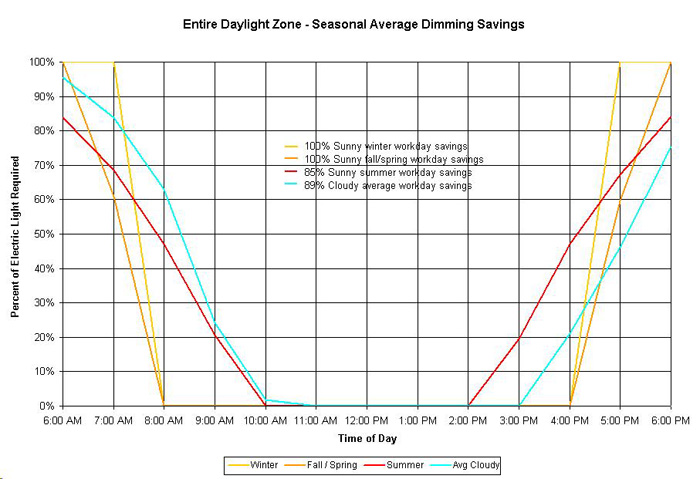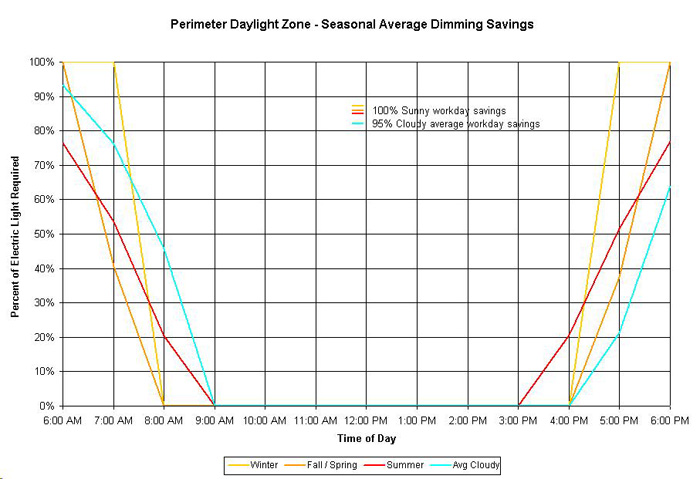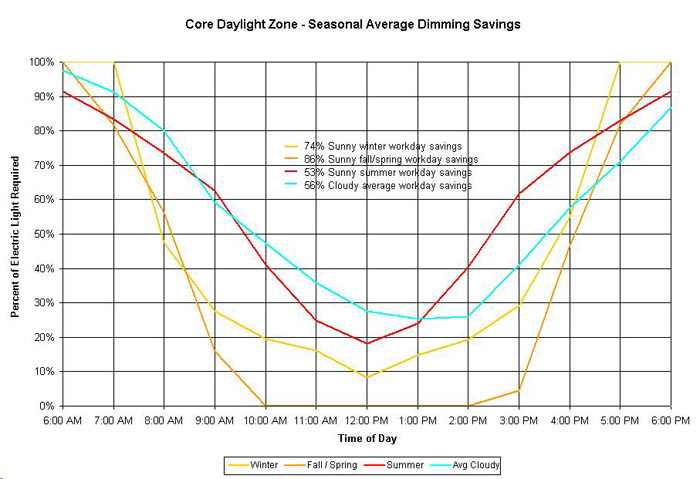Energy Savings
Plots showing the amount that the electric lights can be dimmed answer the question, “How much energy can the LightLouver Daylighting Systemsave?” Energy savings are possible because electric lights can dimmed or turned off, depending on the amount of illuminance provided by the LightLouver Daylighting System. The figure below displays graphs of the potential to dim or turn off electric lights during each season, on average for the year, and on a cloudy day. These are displayed as the percentage of electric light that would need to be on at each hour of the day. The procedure for adjusting the values for a specific location described above applies to these values, as well. Continuing the example from above, the amount of electric light that would need to be on at noon in the fall is (0.7 x0%) + (0.3 x 28%) = 8.4%.
The calculation of energy savings also requires knowing the lighting power density (LPD). The LPD will be greater for older buildings, which may be 2.2 W/sf, than for new buildings, which may be 1.0 W/sf. For a building that has 20,000 sf of daylit area, a LPD of 2.2, and 8.4% of lighting required, the savings for the one hour at noon in the fall is (20,000 x 2.2 x (1 - .084)) = 40,304 W-hrs or 40.3 kWh.



To Download a PDF of the information presented above, please click the following link:
